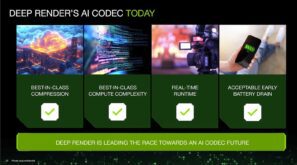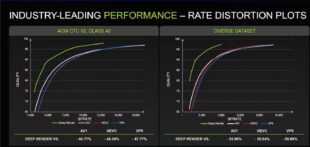I recently produced a webinar for Broadcast Engineering Magazine where I compared the quality of the same test footage encoded using the H.264 and MPEG-2 codecs. Since most production encoding in the broadcast space is live, I used encoding using constant bit rate encoding and limited both codecs to the Main profile, since not all playback devices support the high profile. I encoded all test files using Sorenson Squeeze 7.
Here are the frames that I showed in the presentation. Click each figure to view the full resolution frame.
Contents
MPEG-2 at 10 Mbps, H.264 @ 5 Mbps
Low motion – very little difference in quality.
High motion – MPEG-2 gets very blocky, even at twice the data rate of H.264.
MPEG-2 at 10 Mbps, H.264 @ 4 Mbps
MPEG-2 has better detail retention (see the man’s face), but is much blockier. Most viewers would still likely prefer H.264 though. Don’t mind the captions, these files were encoded using the main profile and CBR also.
MPEG-2 at 10 Mbps, H.264 @ 2 Mbps
At 20% the bitrate of MPEG-2, we’ve probably crossed the Rubicon, and MPEG-2 is superior. Don’t mind the captions, these files were encoded using the main profile and CBR also.
 Streaming Learning Center Where Streaming Professionals Learn to Excel
Streaming Learning Center Where Streaming Professionals Learn to Excel










